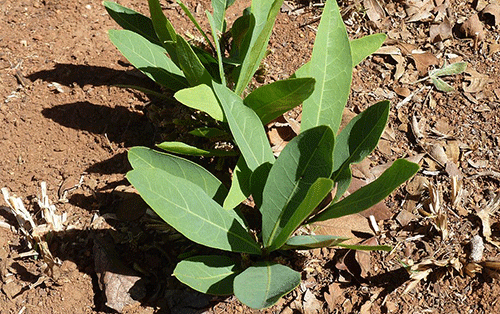Many rangeland plants contain chemicals that are poisonous to livestock when eaten. Poisonous plants vary in their toxicity and the symptoms displayed by the affected animals.
Generally, the level of toxicity can be classified into two; the first consists of extremely toxic plants and those with low toxicity. The extremely toxic plants such as Dichapetalum cymosum (Poison leaf/Gifblaar) will only have to be ingested in small amounts for animals to show signs of poisoning whereas the low toxic plants such as Geigeria ornativa (Vermeerbos) show their effects when eaten in larger amounts and over a longer period.
Poisonous plants mostly emerge during spring (August/September/October) and when pastures are in poor condition or overgrazed. Animals are vulnerable to poisonous plants due to the following basic factors, among others:
– Hunger: Animals are supposed to satisfy their daily forage requirements, thus, if the valuable forage is depleted, then the animals are tempted to eat any available plant to satisfy their daily need and, in the process, also eat poisonous plants. This is more likely to occur during drought periods and when the rangeland is degraded.
– Inexperience: This can be attributed to animals being new in the area or young and thus they are not familiar with the local forages or cannot distinguish the valuable plants from the poisonous plants. It is thus advisable to avoid introducing animals to a strange area during the time/season when the poisonous plants are active.
– Accident: An animal familiar with the local forage is also vulnerable to plant poisoning as it may ingest it by accident. This is when a poisonous plant has grown close to or blended in with a valuable plant and ingested together. Also, it may be that a poisonous plant may have been harvested together with hay. The toxicity of poisonous plants is influenced by several factors such as soil type, climatic factors, season, plant growth stage, the plant part is eaten, and plant moisture content among others. Poisonous plants have different effects on animals and different clinical signs; they are classified as plants either causing; heart problems, nervousness, diarrhoea, liver damage, obstruction in the gut, skeletal and skin problems, reproduction problems, and plants causing a taint in meat and milk.
Preventing and treating plant poisoning
Avoid overgrazing and do not allow animals to graze in areas where the poisonous plants grow. Such areas can be camped off and grazed only when the poisonous plants disappear, and the other valuable plants dominate.
– In the event of suspected poisoning, the animal should not be allowed to drink water for at least two days, especially when poisoning is suspected to be from an extremely toxic plant (e.g. Poison leaf), and the animal should be handled with care and not stressed. These are ways to limit or slow the circulation of poison through the entire body.
Remedies to neutralise the poison
Try to use Hypo; it is a crystal-like content that should be mixed with water. It can be added to the water in the drinking trough and all animals can drink as they arrive from the veld.
Charcoal; this can either be activated charcoal sold commercially or the normal charcoal from the fire. The normal charcoal is the easiest home-based remedy to use.
It should be well grinded into a fine content and mixed with water and given orally to the poisoned animal. These remedies and others are readily available in the agriculture shops and their application should follow the instructions on the labels.
Finally, it is advisable that farmers familiarise themselves with their rangeland, and develop an inventory of the local valuable plants and the poisonous plants.
There are guidebooks for more information, especially with the identification of these plants. Such books include “Toxic Plants of Veterinary Importance in Namibia” and “Grasses of Namibia” amongst others.
*Erastus Ngaruka is Agribank’s technical advisor on livestock and rangeland.


